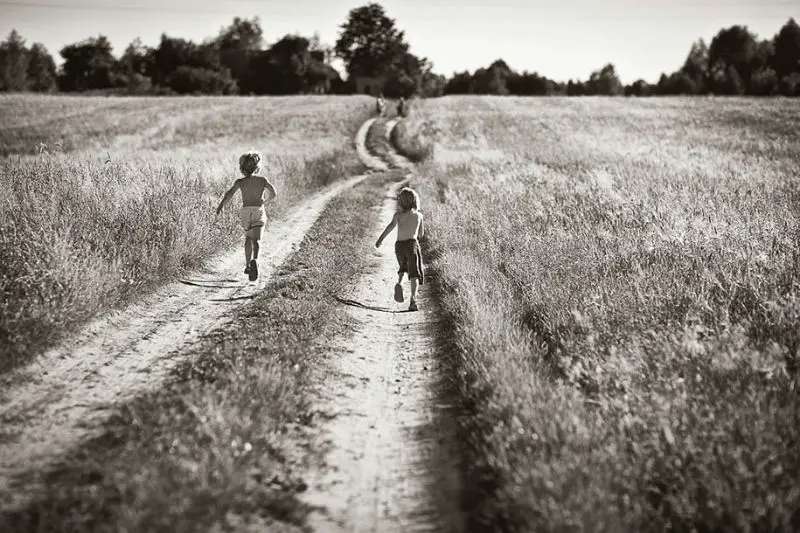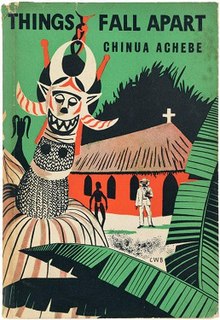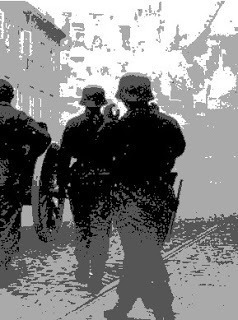 |
| http://www.grahamhenderson.ca/tuesday-verse/Day/7/Year/pb-shelley-ode-to-the-west-wind-1819 |
- The speaker appeals to the West Wind four times in this first stanza.
- Lines 1-5 are the first appeal, in which the speaker describes the West Wind as the breath of Autumn.
- Like a magician removing ghosts or evil spirits, the West Wind sweeps away the dead leaves. These dead leaves are multicoloured, but not beautiful in the way we usually think of autumn leaves – their colours are strange and warning and seem almost diseased (like "pestilence-stricken multitudes").
Lines 5-8
- The speaker appeals to the West Wind a second time.
- This time, the West Wind is described as carrying seeds to their grave-like places in the ground, where they’ll stay until the spring wind comes and revives them. The wind burying seeds in the ground is like a charioteer driving corpses to their graves.
Lines 8-12
- Once the West Wind has carried the seeds into the ground, they lie there all winter and then are woken by the spring wind.
- Shelley thinks of the spring wind as blue (or, to be specific, "azure").
- The spring wind seems to be the cause of all the regeneration and flowering that takes place in that season. It blows a "clarion" (a kind of trumpet) and causes all the seeds to bloom. It fills both "plain and hill" with "living hues and odours." It also opens buds into flowers the way a shepherd drives sheep.
Lines 13-14
- The speaker appeals to the West Wind twice more, describing it as a "Wild Spirit" that’s everywhere at once.
- The West Wind is both "Destroyer and Preserver"; it brings the death of winter, but also makes possible the regeneration of spring.
- Now we find out (sort of) what the speaker wants the wind to do: "hear, oh, hear!" For the moment, that’s all he’s asking – just to be listened to. By the wind.
Lines 15-18
- The speaker continues to describe the West Wind.
- This time, he describes the wind as having clouds spread through it the way dead leaves float in a stream. Leaves fall from the branches of trees, and these clouds fall from the "branches" of the sky and the sea, which work together like "angels of rain and lightning" to create clouds and weather systems.
- There’s a storm coming!
Lines 18-2
- The speaker creates a complex simile describing the storm that the West Wind is bringing. The "locks of the approaching storm" – the thunderclouds, that is – are spread through the airy "blue surface" of the West Wind in the same way that the wild locks of hair on a Mænad (a female follower of Greek God Bacchus) wave around in the air.
- Thunderclouds are to the West Wind as a Mænad’s locks of hair are to the air.
- A Mænad is one of the wild, savage women who hang out with the god Dionysus in Greek mythology. The point here about Mænads is that being wild and crazy, they don’t brush their hair much.
- The poet reminds us that these Mænad-hair-like clouds go vertically all the way through the sky, from the horizon to the centre.
Lines 23-28
· The speaker develops a morbid metaphor to describe the power of the West Wind. The wind is described as a "dirge," or funeral song, to mark the death of the old year. The night that’s falling as the storm comes is going to be like a dark-domed tomb constructed of thunderclouds, lightning, and rain.
· The poet ends by asking the West Wind once again to "hear" him, but we don’t know yet what exactly he wants it to listen to.
Stanza 3 & Stanza 4
Lines 29-32
The speaker tells us more about the West Wind’s wild adventures: the Mediterranean Sea has stayed calm and still during the summer, almost as though on vacation "beside a pumice isle in Baiæ’s bay," a holiday spot for the ancient Romans. But the West Wind has woken the Mediterranean, probably by stirring him up and making the sea rough and stormy.
Lines 33-36 - During his summertime drowsiness, the Mediterranean has seen in his dreams the "old palaces and towers" along Baiæ’s bay, places that are now overgrown with plants so that they have become heartbreakingly attractive. Lines 36-38 - The speaker claims that the "level" Atlantic Ocean breaks itself into "chasms" (gaps) for the West Wind. This is a poetic way of saying the wind disturbs the water, making waves, but it also suggests that the ocean is subservient (a slave) to the West Wind’s amazing powers.
Lines 38-42 - In the depths of the Atlantic Ocean, the different kinds of marine plants hear the West Wind high above and "suddenly grow grey with fear" and beat around, harming themselves in the process. Once again, the speaker ends all these descriptions of the West Wind by asking it to "hear" him.
Lines 43-47 - The speaker begins to describe his own desires more clearly. He wishes he were a "dead leaf" or a "swift cloud" that the West Wind could carry, or a wave that would feel its "power" and "strength. “He imagines this would make him almost as free as the "uncontrollable" West Wind itself.
Lines 47-51 -The speaker is willing to compromise: even if he can’t be a leaf or a cloud, he wishes he could at least have the same relationship to the wind that he had when he was young when the two were "comrade[s]." When he was young, the speaker felt like it was possible for him to be faster and more powerful than the West Wind.
Lines 51-53 - The speaker claims that, if he could have been a leaf or cloud on the West Wind, or felt young and powerful again, he wouldn’t be appealing to the West Wind now for its help. He begs the wind to treat him the way it does natural objects like waves, leaves and clouds.
Lines 54-56 - The speaker exclaims, "I fall upon the thorns of life! I bleed!" He explains that the passage of time has weighed him down and bowed (but not yet broken) his spirit, which started out "tameless, and swift, and proud," just like the West Wind itself.
In the fifth stanza, he wants the West Wind to turn him into a musical instrument. He’ll be the instrument, and the West Wind will play its own music on him. They together will sweet, melancholy, autumn music. The poet asks the wind to become him. He wants the wind’s "fierce" spirit to unite with him entirely, or maybe even replace his own spirit. The speaker compares his thoughts to the dead leaves; perhaps the West Wind can drive his thoughts all over the world in the same way it moves the leaves. He describes his own words – perhaps the words of this very poem – as sparks and ashes that the wind will blow out into the world. The poem ends with the question – If death and decay can come at the end of something then there is always a rebirth and chance for hope.











